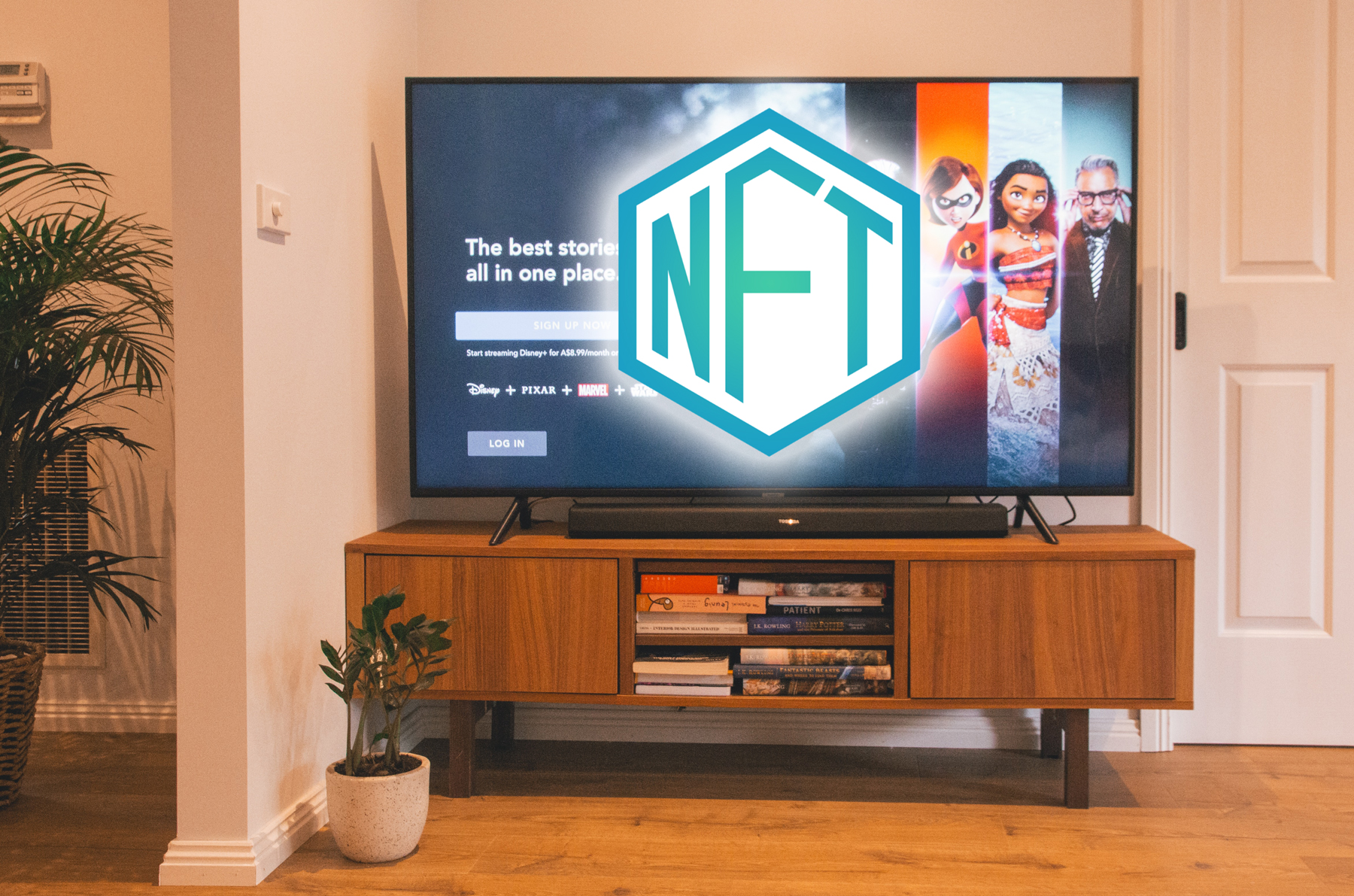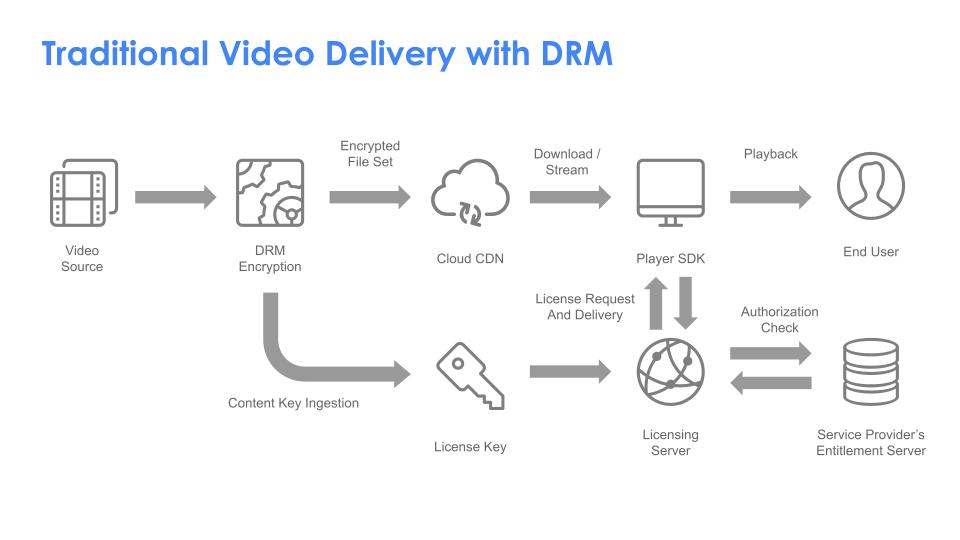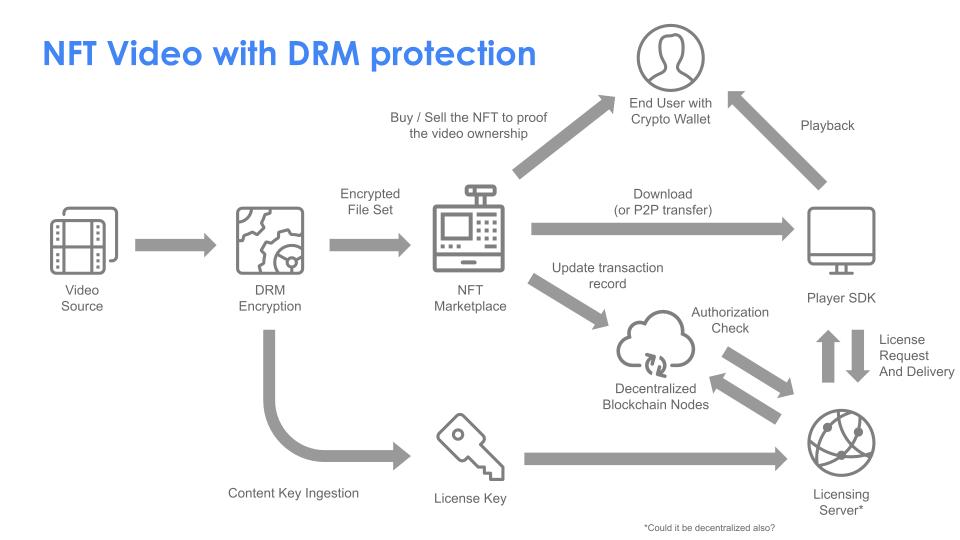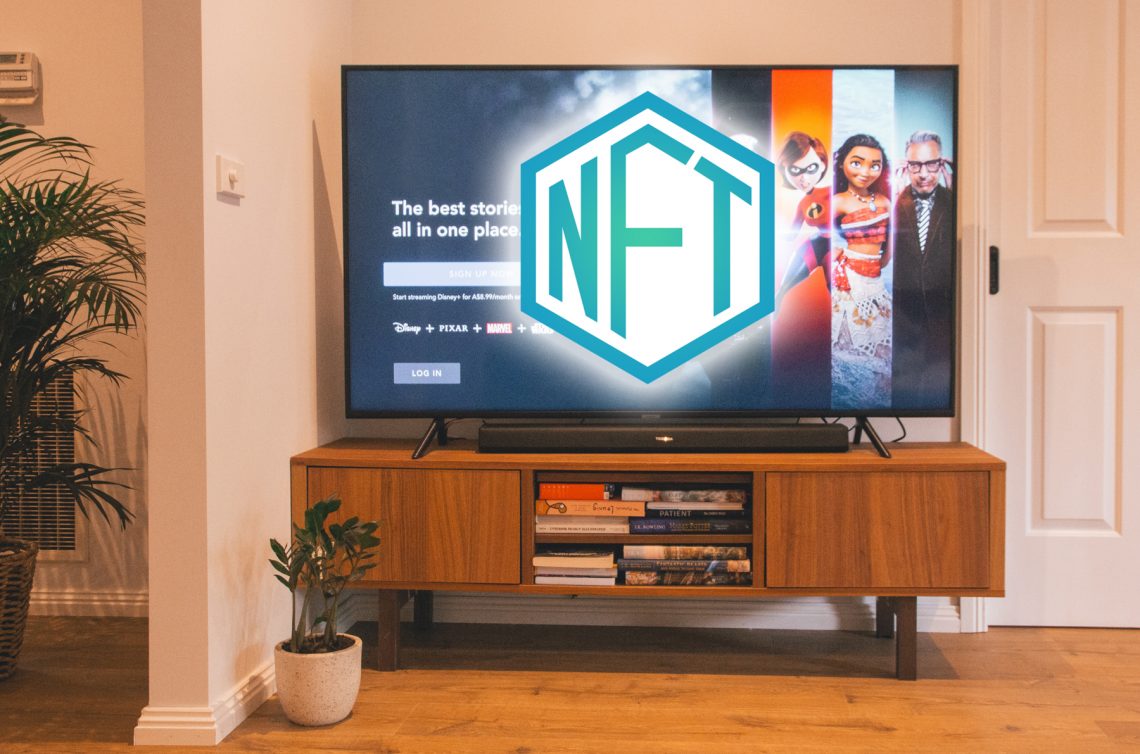
Nowadays, “blockchain” has become a hot topic again following a recent big wave of Non-fungible token (NFT) in digital artwork market. With its immutability feature, the blockchain technology has helped to uniquely identify an digital artefact and therefore the ownership of it could now be proved and verified. The concept of NFT nowadays seems to be sufficient for the digital artworks and the in-game merchandises. But could NFT also work in OTT video service industry? How could it deal with piracy issue?
Concern for distributing video content as NFT
Video content (like a Movie or TV show series) is not like an artwork. Its core value is on the content itself rather than its authenticity or its originality in creation. People consuming pirated video doesn’t care about the ownership or the “uniqueness” of the content. Video Piracy / copyright-infringement used to be a big concern for the video labels and operators where huge investment has been put against it. NFT, on the other hand, could only prove the ownership of a piece of artefact. It cannot prevent the digital content from copying and distributing to others for viewing.
Review on the DRM mechanisms nowadays
To tackle the piracy issue, DRM is widely used to protect the video contents in nowadays online video industry. A licensing server is set up to cross check the user’s authority and entitlements with the service provider’s identity management system, then a license key hashed with dedicated user info and timestamp will be returned to the front-end device to make sure the DRM-encrypted content could only be played with the dedicated player SDK within user’s own device for a specify period of time. With this approach, the content could be well protected even when the video content is played offline (i.e. download-to-watch feature).

How about…. DRM protected Video Content as NFT
While NFT cannot prevent the digital copy from cloning, one should not simply convert the video content file into NFT and sell them. Instead, the NFT concept could be used to replace the intermediary of the authentication / entitlement check service. Here are the highlighted steps:
(1) To begin with, the publisher creates several NFTs for the “proof of ownership” or the “right to access” to a particular DRM-protected video content (the video itself could be free for download or P2P sharing as no one could watch the content with proper decryption anyway). The NFTs could then be sold in the NFT market and be traded between users.
(2) Then, with the NFT purchased the user could use the dedicated video player to trigger play the content. The dedicated player takes the signed hash from user’s crypto wallet to licensing server.
(3) The licensing server will validate with the blockchain servers to see if the user own the NFT and has the access right to watch the dedicated piece of video content (e.g. concurrency check). After the validation, the licensing server then return the license key to the video player in a similar way as the traditional DRM workflow.
With this approach, the online video service could get “decentralised” somehow. Of course, in order to actively protect the video content in the market, the video service provider would still reserve sufficient power to disable (or in crypto world’s word, burn) the NFT or slash the deposit when an abuse is found. Watermark or audio fingerprint should be applied to trace the video piracy.

Potential Benefits / Opportunities
With the enablement of blockchain technology and DRM, we could see new opportunities open up for the online video service.
(1) Instead of paying a huge hosting fee to host and stream the video content with high availability . Video service provider could now sell DRM protected video with the use of NFT. The overhead required would be reduced to (1) the maintenance of the licensing server (which I think it could get decentralised in future too) as well as (2) the evolutive maintenance of the player. The reduced operating cost will enable some small video service providers to enter to the market.
(2) Beside hosting their own OTT streaming platform (e.g. Disney+) or partnering with regional operators, the video content creators/owners could find their third path to sell their content in video NFT directly to the general public. This approach could eliminate lots of intermediaries along the value chain. They may need to work with new partners for NFT publishing and getting the video playable on as many screens as possible.
(3) The niche video content down the long-tail could be stored, hosted and traded among the general public. The role for the traditional online video service provider will be the host/regulator of a marketplace rather than the librarian keeping the ever growing video archive.
Reference for Castlabs
https://drive.google.com/file/d/1fM3zvy1KSCuJs1mX3UjSSYSMiqQMPnUp/view?usp=sharing
WIP diagram draft






Comments by Cheung Chun Ho